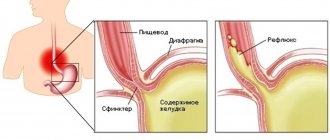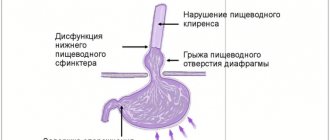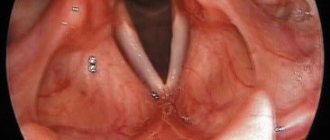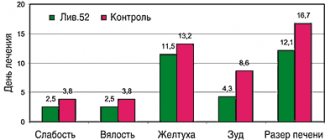Instructions
If a person experiences discomfort in the stomach (for example, heartburn), he first goes to the nearest pharmacy. With such symptoms, pharmacists most often advise taking one of the medications - Maalox or Phosphalugel. Let's get acquainted with the features of using both drugs and patient reviews.
If you have discomfort in the stomach, doctors recommend taking Maalox or Phosphalugel.
How they affect the body
Both medications have a diverse effect on the body:
- antacid;
- enveloping;
- sorbent.
Antacid effect
These medications belong to the group of non-absorbable antacids. Maalox contains an aluminum-magnesium combination, and Phosphalugel contains aluminum salts of phosphoric acid. Thanks to these substances, medications help eliminate acid level disorders by reducing the aggressiveness of gastric juice and eliminating heartburn, pain due to ulcers, and unpleasant sensations in the stomach and esophagus. Aluminum formations favor the creation of a protective film on the affected surface, and magnesium restores the protective functions of the gastric mucosa.
Enveloping effect
The medications have the properties of gastrocytoprotectors, which activate the synthesis of mucin by regenerating the mucous membranes in the stomach, protecting the surfaces of the organ from negative effects.
When drugs enter the body, they form colloidal solutions, which allows them to have an enveloping effect.
A special film, which is formed due to aluminum phosphate, protects the mucous membrane from the influence of pepsins, various enzymatic substances, gastric juice and inhibits the irritant effect on sensitive nerve endings.
Sorbent action
Antacids are characterized by a decrease in the digestive activity of pepsins through their adsorption, as well as bile acids and lysolecithin. They promote the absorption of harmful substances, microorganisms, toxins and their elimination during bowel movements. Thanks to these properties, these medications are effective in various forms of poisoning and intoxication.
Comparative characteristics
Antacid drugs are not used independently; they are prescribed as part of complex treatment to eliminate the signs of many diseases of the esophagus and digestive organs or for short-term relief of symptoms of dyspeptic conditions.
What is better Phosphalugel or Maalox
When choosing between Maalox and Phosphalugel, you need to carefully read the annotation. Read about contraindications and adverse reactions. Which drug will be more effective depends on the disease being treated.
To quickly eliminate heartburn and normalize the level of acid in the stomach, Maalox is more suitable.
To quickly eliminate heartburn and normalize the level of acid in the stomach, Maalox is more suitable. Its effect can be noticed after 9 minutes.
For diseases of the esophagus, ulcers, gastritis, reflux esophagitis, it is recommended to give preference to Phosphalugel, as it provokes fewer negative reactions.
We recommend reading: Is it possible to take De-Nol and Almagel at the same time?
Indications for use
Maalox is prescribed for the following conditions:
- gastritis of chronic and acute course;
- chronic gastroduodenitis and exacerbation;
- reflux esophagitis;
- hernia in the esophageal opening of the diaphragm;
- ulcers in the stomach and duodenum;
- heartburn, pain, discomfort in the epigastric region.
Phosphalugel is used to treat the following pathologies and conditions:
- peptic ulcer disease in the stomach and duodenum;
- paraesophageal hernia;
- chronic gastritis with normal or increased secretion synthesis;
- duodenogastric reflux;
- gastroesophageal reflux pathology;
- functional diarrhea;
- pancreatitis;
- heartburn;
- flatulence;
- sour belching;
- gastrointestinal disorders caused by poisoning, intestinal infection, medication, unhealthy diet;
- dyspeptic disorders resulting from non-compliance with diet, alcohol abuse, smoking and coffee.
Phosphalugel is used to treat chronic gastritis with normal or increased secretion synthesis.
The medications have similar indications for use and help neutralize stomach acid, although there are some differences. Phosphalugel has a wider spectrum of action; it does not contain sorbitol and sodium chloride, which is why it is used in the treatment of diseases of the digestive system in diabetics and hypertensive patients.
Ease of use
Phosphalugel is sold only in the form of an oral gel, therefore it also has an additional enveloping effect, which is especially valuable for erosions and ulcerations of the mucous membranes of the intestines and stomach.
Maalox can be found in pharmacies in tablet form and in the form of suspensions. Suspensions and gels are the forms of choice in the treatment of diseases of the stomach and intestines. However, tablets may have a longer shelf life than gel and suspension.
The advantage of Maalox chewable tablets in this case is that there is a special form of tablets that does not contain sugar, which is suitable for patients with any form of diabetes. Now we know what the differences are between the drugs Maalox and Phosphalugel.
How to take Maalox and Phosphalugel
Maalox release form: chewable tablets (with and without sugar); gel in sachets containing a single dose; suspension with a volume of 250 ml. The gel and suspension are taken orally.
The gel or suspension is taken orally in 5-10 ml doses, and the medicine in the form of tablets is chewed in an amount of 2-3 pieces 1-2 hours after meals and at night, if a gastric ulcer is diagnosed - 30 minutes before eating. If necessary, the single dosage is increased to 3-4 tablets or 15 ml in liquid form.
When the desired effect is achieved, Maalox is taken 5 ml or 1 tablet three times a day.
Duration of therapy is 3 months. For the purpose of prevention, if there is a possibility of irritating the gastric mucosa, you need to take 5-10 ml of gel or suspension or chew 1-2 tablets.
Phosphalugel is produced in the form of a gel. It is taken pure or diluted in water (1 sachet of medicine per 125 ml of water). Dosage for adults: 1-2 sachets 2-3 times a day. If discomfort occurs between doses of the drug, repeated use is allowed.
For a child under six months of age, the dose is 1 tsp. 6 times a day (each time after meals), upon reaching 6 months - 2 tsp. 4 times during the day (also after meals).
We recommend reading: What to choose: Trimedat or Trimedat Forte?
The course of treatment is a maximum of 14 days.
Phosphalugel
The widely prescribed drug works specifically for diseases of the stomach and intestines with high acidity. The price of one package ranges from 350 to 760 Russian rubles.
The drug is presented in the form of a gel. Thanks to this, high levels of hydrochloric acid are suppressed. Contains the active substance - aluminum phosphate.
In the pharmacy the drug is sold in sachets of suspension for a single dose.
Indications for use
Phosphalugel is prescribed for the treatment and prevention of diseases of the digestive tract. The gel is indicated both in combination with other drugs and separately as monotherapy. Used for the following diseases:
- stomach and duodenal ulcers;
- gastritis with high acidity;
- reflux esophagitis;
- diaphragmatic hernias;
- gastroduodenitis;
- pancreatitis;
- diarrhea;
- food poisoning;
- intestinal infections.
Inflammation of the stomach, esophagus and pancreas often goes “side by side” with pain, which is stimulated by increased production of hydrochloric acid. High levels of acidity contribute to the appearance of erosions and ulcers. In such situations, Phosphalugel is certainly prescribed; gastritis and pancreatitis require therapeutic therapy with this drug.
Relief of inflammatory processes in the gastrointestinal tract, including the pancreas, involves taking anti-inflammatory and analgesic drugs, as well as enzymes and antacids.
The cure for such diseases can be completely successful only if the therapy prescribed by the doctor is strictly followed, as well as by following a diet and maintaining a correct lifestyle.
Contraindications
Phosphalugel is contraindicated for:
- severe renal failure;
- diabetes mellitus;
- individual intolerance to components.
Prescription of Phosphalugel for pregnant and lactating women is possible, but only under the mandatory supervision of a doctor.
Features of application
The course of taking the drug is determined individually. On average, the daily intake for an adult should not exceed 5–6 packets of suspension. The children's dosage is calculated for three doses and is a quarter of a sachet at a time.
This drug can be prescribed to young children. However, the dosage should be calculated strictly by a pediatrician.
Phosphalugel is taken 2 hours before meals or 2 hours after meals and other medications.
The storage conditions provided by the manufacturer allow you to keep the medicine at room temperature.
The gel is in most cases well tolerated by patients. Occasionally, adverse reactions such as allergies and constipation occurred. In this case, you should increase the amount of liquid (water) consumed per day.
During treatment it is prohibited to drink alcohol.
special instructions
When treating with Phosphalugel and Maalox, some points should be taken into account.
For pancreatitis
Taking Phosphalugel for pancreatitis is permitted in both acute and chronic cases.
The use of Maalox for this pathology is possible only as prescribed by a doctor.
The medicine is prescribed taking into account the stage and severity of the disease, accompanying symptoms, and existing contraindications.
Pregnancy and lactation
In therapeutic dosage, both drugs can be used during pregnancy and lactation, but only on medical advice.
Childhood
Maalox is contraindicated for children until they reach 15 years of age. And Phosphalugel can be used to eliminate discomfort in the digestive system even in infants.
Elderly age
Phosphalugel in people of this age group can provoke an increase in the level of aluminum in the blood.
Taking Maalox in an increased dosage worsens resistance and obstruction in the intestines.
Age restrictions for use
When choosing Phosphalugel or Maalox, you should pay attention to the patient’s age.
The manufacturers of Maalox have not conducted studies on the effect of the drug on young children, therefore the drug is contraindicated in children under fifteen years of age.
Thus, Maalox can only be taken by children over fifteen years of age and adults.
It is also allowed for elderly patients if there are no kidney pathologies. Phosphalugel , in turn, is prescribed even to infants, if the need arises. And although the drug does not cause obvious harm to the child’s body, careful selection of dosages and monitoring of the child’s condition is required. In old age, Phosphalugel is also allowed, but, like Maalox, it is not prescribed for kidney pathologies.
Both of these drugs require caution when used in old age, as they cause a decrease in the amount of calcium in the body, which is unsafe for bone tissue.
Side effects of Maalox and Phosphalugel
If the dose of Maalox is selected correctly, only minor side effects may develop in the form of nausea, vomiting, constipation, and changes in taste. If you take this medicine for a long time or exceed the dose, phosphates in the body are reduced and calcium is washed out, aluminum in the bloodstream increases, and encephalopathy and kidney pathologies may develop.
If a patient is diagnosed with renal failure, blood pressure decreases, thirst and hyporeflexia occur.
Phosphalugel can cause negative effects such as constipation (more often in elderly patients or bedridden patients). You should use the medicine with caution if you have kidney or heart failure.
Interaction with other drugs
Taking cardiac glycosides, iron-containing medications and antibiotics from the tetracycline group is allowed 2 hours after Phosphalugel.
Maalox in combination with Quinidine can lead to an increase in concentration in the bloodstream and an overdose of the latter.
Taking Maalox helps reduce the absorption of certain drugs from the intestinal system. Maalox and polystyrene sulfonate can provoke metabolic alkalosis (in patients suffering from renal failure) and intestinal obstruction.
We recommend reading: Penzital or Pancreatin: which is better
Overdose
An overdose is possible when taking both medications. In case of an overdose of Phosphalugel, a deterioration in intestinal motility is observed. For treatment you need to take a laxative.
Symptoms of overdose when taking Maalox:
- diarrhea;
- vomit;
- abdominal pain;
- intestinal obstruction (in patients at risk).
Treatment of overdose: removing fluid from the body, drinking plenty of fluids. Patients with kidney disease need professional help: hemodialysis or dialysis.
Reviews
Alexander, 26 years old: “Even as a child, acidity often increased, especially if I ate some homemade pickles, which I love. However, because of such food, I could not sleep at night, and stomach pain appeared. To get rid of the problem, I tried a lot of drugs and vaccines. I settled on Maalox, with its help all unpleasant sensations disappear almost instantly.”
Elena, 30 years old: “When I have discomfort in my stomach, I use Phosphalugel in gel form. The medicine has a pleasant taste and is convenient to use, especially during a trip. But there is a small drawback - the development of constipation. But perhaps this is an individual reaction of my body.”
Maalox
The action of the drug is aimed at suppressing heartburn and attacks of stomach pain. The approximate cost in Russia varies from 150 to 545 rubles. Such a “range” in price depends, among other things, on the form of release of the drug. It can be tablets or suspension.
Maalox, presented as a syrup, resembles milk with a pleasant mint aroma. But the drug in tablet form must be chewed. The composition includes antacid substances that have an enveloping effect and neutralize the effects of hydrochloric acid - aluminum hydroxide and magnesium hydroxide.
Indications for use
Maalox is used for heartburn. The product helps normalize acidity in patients of any age, including children aged 15 years and older.
The daily dose of the suspension should not exceed 6 sachets, and before use, each sachet is kneaded to obtain a homogeneous mass.
In case of overeating, the consequences of drinking alcohol, caffeine and nicotine, the remedy can be aimed at combating heartburn, belching and flatulence.
Contraindications
Maalox is not suitable for everyone: there are restrictions when taking the medicine. The use of Maalox is contraindicated for:
- renal failure;
- Alzheimer's disease;
- intestinal disorders (constipation or diarrhea);
- abdominal pain of unknown etiology;
- children under 15 years of age;
- individual intolerance.
An opened bottle of Maalox can be stored for 6 months.
Side effects
Do not use Maalox more than prescribed by your doctor. Overdose, including daily overdose, leads to hypophosphatemia of the body (decreased phosphate levels), as well as calcium leaching.
Exceeding the indicated medical norm increases the likelihood of developing allergic reactions, which manifest themselves in the form of skin irritations and rashes. From the digestive system, constipation or diarrhea is possible. Long-term use of the drug can lead to swelling.
The suspension is dangerous for people with porphyria (pigment metabolism disorder). Maalox is not prescribed to patients undergoing hemodialysis.





